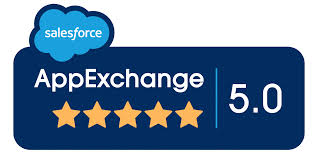Salesforce Sales Cloud SMS Integration
Seamless Enterprise SMS—100% Native to Salesforce
TrueDialog’s AppExchange app integrates flawlessly with Salesforce clouds, empowering personalized bulk campaigns & effortless 1-to-1 text messaging.
Request a DemoSalesforce AppExchange App
How It Works and Why It’s So Valuable
See Our Advanced Features
TrueDialog is the premier SMS solution for both bulk and 1×1, two-way text messages to leads, contacts, accounts and opportunities
Maximize Engagement with Flexible SMS Campaigns
TrueDialog offers a variety of campaign types to accommodate different business needs:
- Using short or long codes
- Run manual message campaigns for targeted outreach
- Set up workflow-based messages to automate interactions
- Configure triggered messages that send texts based on specific customer actions from inside Salesforce Sales Cloud.
- Launch bulk SMS campaigns for mass sales outreach (with higher sender limits than others)
- Leverage one-to-one, two-way messaging for personalized communication
Whether sending bulk or one-to one, whether sending messages manually or automating campaigns, TrueDialog provides flexible options for your strategy.
Schedule a Demo
If It’s Not in Salesforce, Did It Even Happen?
Enable your sales reps to text prospects and customers—while automatically capturing every interaction in Salesforce Sales Cloud.
Texting is a powerful way to build connections and engage leads, but without proper tracking, valuable insights are lost.
With TrueDialog’s Salesforce App, sales teams send and receive texts from their phones or web browser, ensuring every conversation is recorded for better analytics, smarter follow-ups, and increased revenue.
New! Bi-directional integration with Salesforce Marketing Cloud
Schedule a Demo
Effortless Contact Management with Built-in Compliance
TrueDialog simplifies contact management by allowing businesses to bulk upload contacts directly into Salesforce, ensuring a seamless data import process.
The platform also supports single opt-in functionality, making it easy for customers to subscribe to SMS communications.
Additionally, TrueDialog ensures opt-out compliance by keyword, helping businesses stay compliant with industry regulations while providing customers with a clear and easy way to manage their preferences.
Schedule a Demo



























